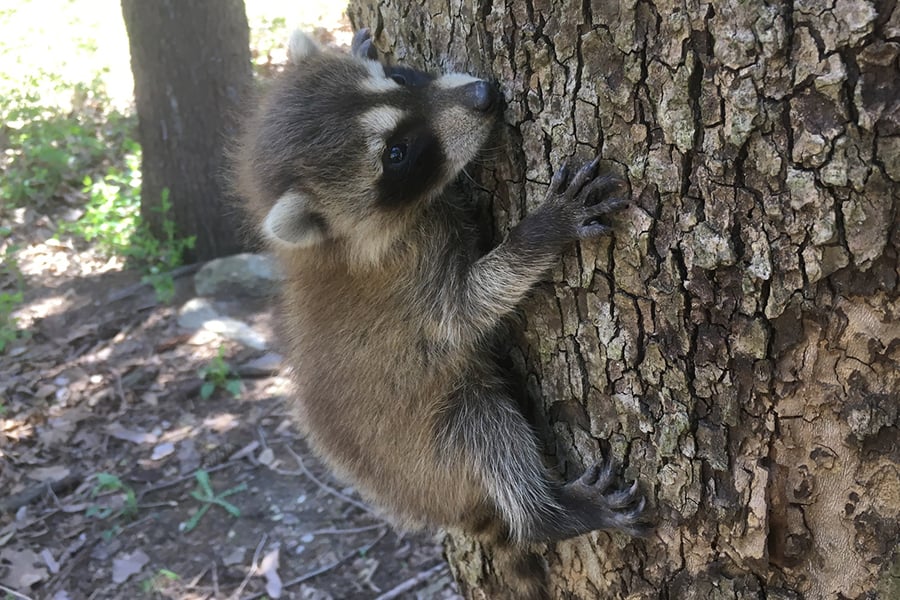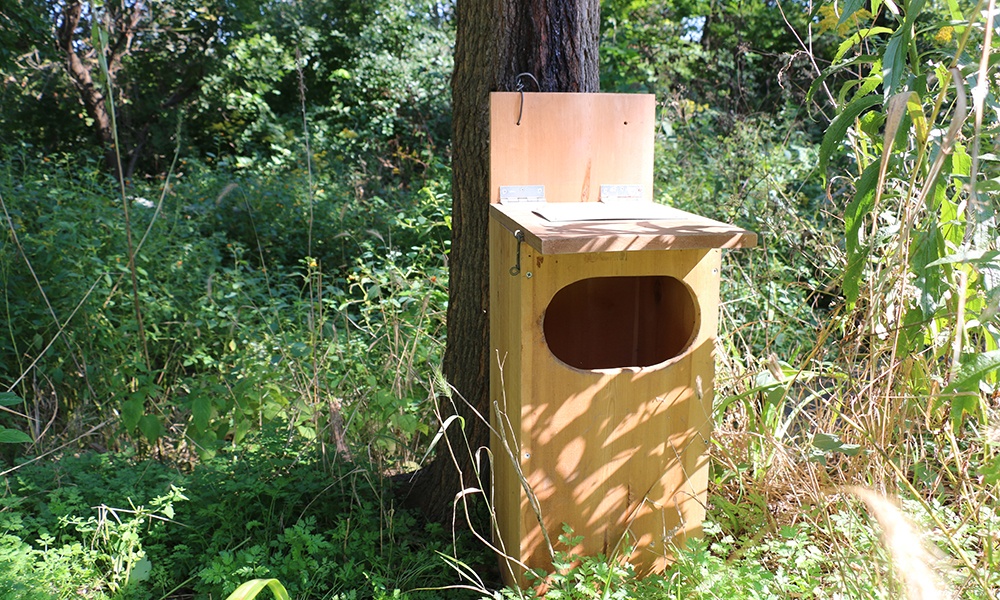I Found a Baby Raccoon. What Should I Do?
If you find a baby raccoon, first call the DuPage Wildlife Conservation Center at 630-942-6200 to determine if the animal truly needs assistance. As of Nov. 15, 2023, the center no longer accepts raccoons. Recordings provide information after hours, and additional assistance is included on this webpage.
Signs a Baby Raccoon May Need Medical Help
- Obvious bleeding
- Obvious fracture
- Severe head tilt
- Swollen, crusty and red eyes or obvious eye injury
- Obvious maggots or parasites
- Follows humans continuously
How to Help a Baby Raccoon
Raccoons can have spring and fall litters. A mother raccoon often leaves her young for extended periods at a time. Unless a baby raccoon is exhibiting a sign that it needs help, please try to leave it alone.
If the mother raccoon does not return to her baby or it is in an unsafe location and you can get to it, then take a few simple measures to help it.

Steps to Reunite a Raccoon With Its Mother
A baby raccoon found unattended should always be given a chance to reunite with its mother.
Use a Nest Box
- Locate the original den site and determine the path the mother would most likely travel to and from the den. If that den site was in a home or other structure and the baby has been removed from its original location, leave it in a nest box as near as possible to the point of original access.
- Place the nest box somewhere along or as close to this path as possible. (If pets or children are in the area, we recommended that you hang the nest box out-of-reach.)
DuPage Wildlife Conservation Center loans out sturdy, wooden nest boxes, or you can make your own. A fully enclosed box with an entrance hole will serve the purpose. Place nesting materials such as grass or leaves in the box. - Leave the area and the baby raccoon in the nest box overnight. Do not disturb the nest box in any way for the amount of time designated by DuPage Wildlife Conservation Center staff. Do not feed the baby; it needs to cry so mom can better locate it. Do not remove the baby from the nest box. Do not put food out for the mother, as this may attract predators.
If you want to monitor the nest, do so from inside your house. Your presence in the area will prevent the mother from approaching the nest box. It also helps to keep activity around the box to a minimum. Keep children, pets or anything that might deter the mother from returning away from the nest box. - Do not be alarmed if the baby disappears (or babies disappear, maybe one at a time). It may take the mother several days to relocate an entire litter. In some situations, the mother may use the nest box to raise her young.
- Check the box after the designated time period has passed. If mom has visited, the baby's belly will appear round and full from feeding. If the designated time period has passed and a baby is still in the box with a belly that appears to be empty, it's time to return the box to the DuPage Wildlife Conservation Center and consider alternative options.
If you are unsure about how to check the baby raccoon's condition, call 630-942-6200 for advice.
Where and How to Place a Nest Box
- If tree cutting has disrupted the original nest, place the nest box at the base of the tree. If the entire tree was removed, place the nest box on the trunk of a nearby tree.

- If the nest was removed from an attic or chimney, place the nest box at the base of the building. If the path to the original nest site is known, the nest box should be placed along that path. If the mother uses a nearby tree to gain access to the roof for example, the nest box should be placed at the base of that tree.
- If the nest was removed from under a deck or building, place the nest box on the ground nearby.
Possible Outcomes
If you have helped a baby raccoon, you might experience one of the following outcomes:
- The mother moves her young to another site
- The mother uses the nest box to raise her young
- The mother does not return or moves only some of the young. (Mothers may leave unhealthy babies behind.)
- The mother has been killed or injured and cannot return
- The mother fails to locate the nest, and the baby passes away
- A predator locates the nest and takes the baby to feed itself or its young. (Predation is a natural outcome for many baby animals of all species.)